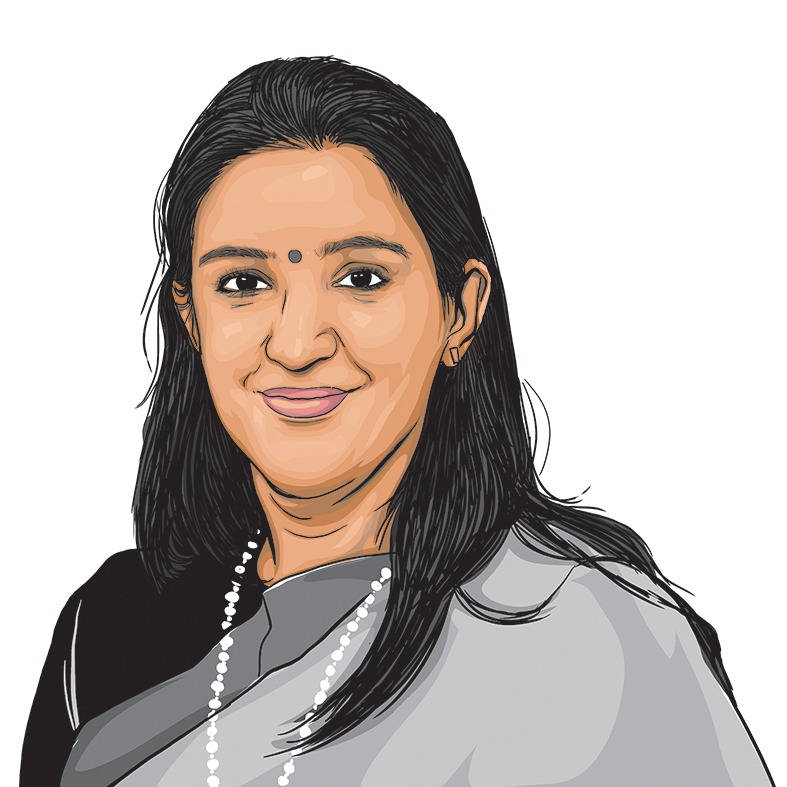Opinion For a Viksit Bharat, data that informs and enlivens
Outcome-driven monitoring can strengthen last-mile public service delivery.
 Data should empower, not intimidate. Yet in many systems, it’s used to inspect rather than to improve. Outcome-driven systems flip this script — treating data not as a scorecard but as a coaching tool.
Data should empower, not intimidate. Yet in many systems, it’s used to inspect rather than to improve. Outcome-driven systems flip this script — treating data not as a scorecard but as a coaching tool. In Lingampet, Telangana, a mother watched as her child was weighed on a rickety Salter scale at the Anganwadi centre. For the first time, aided by the Nutrition and Health Tracking System (NHTS) app and a simple conversation with the supervisor, she saw this not as a bureaucratic ritual, but as a meaningful glimpse into her child’s health. A few kilometres away, a teacher at a school cluster meeting in Boraspet said, “Only 20 per cent of our children can read with understanding. We want to take that to 60 per cent.”
These moments demonstrate what data can achieve when it’s purposeful, empathetic, and actionable. It moves from a compliance exercise to a catalytic one — especially in critical sectors like nutrition, education and health.
India’s public systems generate an overwhelming volume of data — from dashboards like the Unified District Information System for Education (UDISE+) and the Health Management Information System (HMIS) to national surveys like the National Family Health Survey (NFHS) and the National Sample Survey (NSS). Yet, amidst hundreds of tracked indicators, there is insufficient clarity on what truly matters. Inputs are recorded in detail, but outcomes much less so. Frontline workers feed data upwards without knowing how it leads to better delivery. National surveys, while valuable, are too infrequent, too broad and often overlook state-specific schemes and local goals.
So, what does it take to move from data fatigue to a data decision support system? We propose a shift to what we call the 4As of outcome-driven monitoring: Ascertain, Assess, Assist, and Adapt.
When systems chase too many indicators, they end up focusing on none. That’s why outcome-driven systems begin with clarity — identifying what truly matters and aligning everything else around it.
Instead of starting with spreadsheets, Uttar Pradesh’s NIPUN Bharat Mission started with a question: What should a child know by the end of each grade? These learning goals, called Lakshyas, were broken down into weekly checkpoints through the NIPUN Soochi, giving teachers a step-by-step roadmap. “Improving learning” became less of a slogan and more of a timetable. Importantly, the state didn’t create new structures. It made existing ones — training, assessments, review meetings — work better together. No complexity added, just more coherence.
Once that alignment is achieved, the next step is to ask: Is it working? That’s where regular, embedded assessment comes in.
Assessments work best when they’re routine, regular and integrated as a part of the teaching-learning or administrative processes, as opposed to being reserved for audits that trigger a system-wide panic. A pilot in Andhra Pradesh led by Karthik Muralidharan demonstrated this powerfully. When real-time dashboards were paired with regular mentoring and school visits, foundational learning improved by nearly 20 per cent in just one year. When data informs action, improvement follows. States like Madhya Pradesh, UP and Telangana are embedding this into the everyday. The 4+1+1 model — four days of teaching, one for assessment, one for revision and remediation — builds progress checks into the school week, identifies struggling learners early and supports them with targeted instruction.
Telangana’s Human Development and Livelihood Survey (HDLS) enables departments to monitor broader citizen outcomes annually, using the data not just to report progress but to adjust programmes, close delivery gaps and allocate resources better. These interventions ensure that data helps frontline workers catch issues early, adapt quickly, and turn feedback into a habit. Because in public systems, success isn’t about having no problems — it’s about addressing them better and faster.
Data should empower, not intimidate. Yet in many systems, it’s used to inspect rather than to improve. Outcome-driven systems flip this script — treating data not as a scorecard but as a coaching tool.
In Telangana’s rural development department, workers track outcomes through self-reporting, manager visits and feedback calls from citizens, creating greater accountability, without the blame. In Odisha’s schools, teachers sit together in quarterly cluster- and block-level meetings to make sense of the data and solve problems. In Andhra Pradesh, real-time citizen feedback under the Rythu Bandhu scheme led to timely disbursal rates improving by over 25 per cent and grievance redressal times being cut nearly in half. People even started trusting the system more.
most read
For systems to adapt consistently to feedback data, they would benefit from analytical muscle — a dedicated data analytics unit (DAU) embedded within planning departments. DAUs can stitch together programme data, citizen feedback, and real-time survey results to generate actionable insights.
By anchoring public monitoring in the 4As, we can move from counting activities to changing lives, from tracking inputs to building a truly Viksit Bharat. Because what is measured can be managed. But what is understood improves the last mile for 1.4 billion citizens.
Sharma-Kukreja is CEO & MD at Central Square Foundation and Pingale is a retired IAS officer and CEO at Centre for Effective Governance of Indian States







